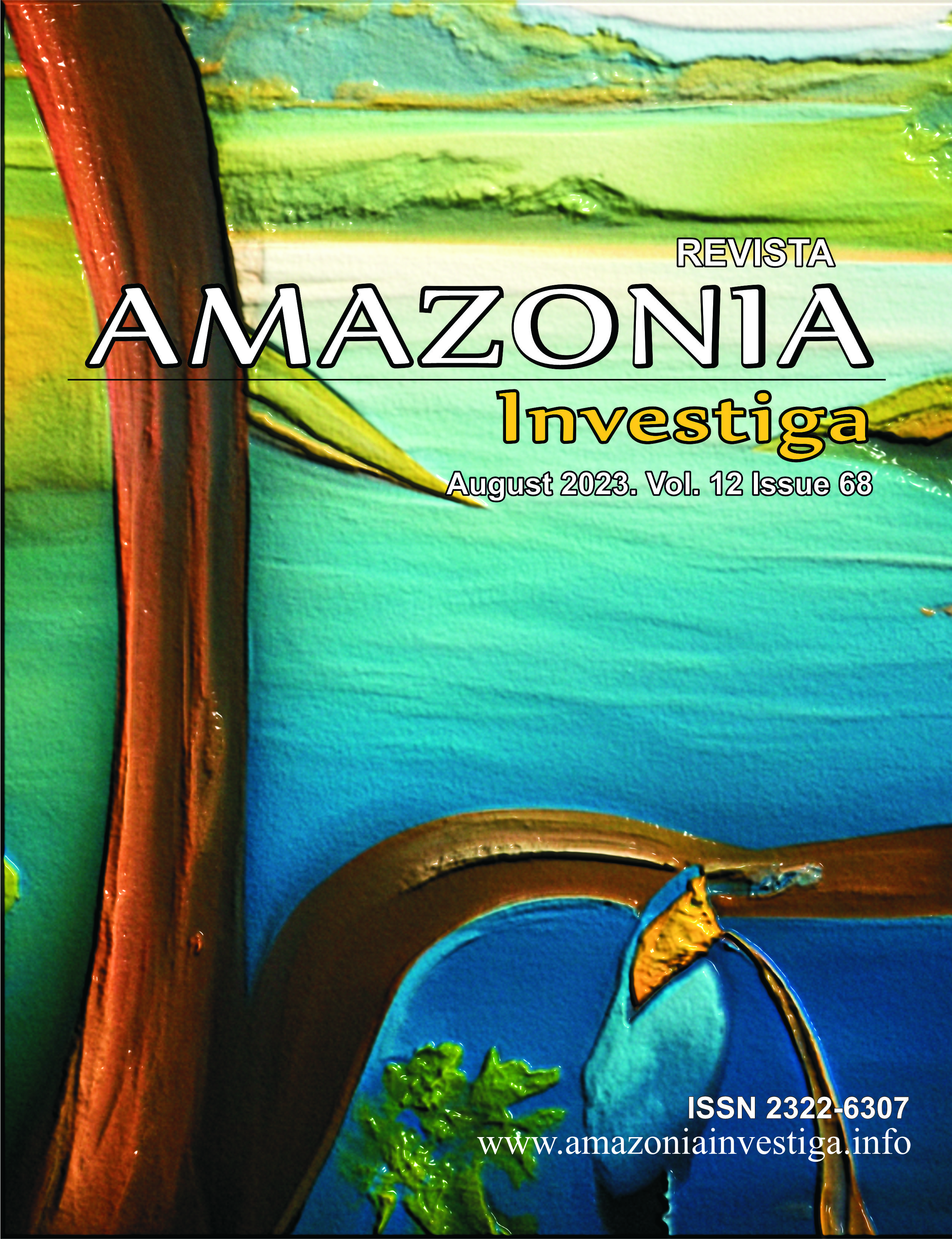Diagnostic markers and scale of differential diagnosis of socially-disadaptative post-combat syndrome
Publicado 2023-08-30
Palabras clave
- combat mental trauma, mental disorders, combatants, veterans, differential diagnosis, psychometry.
Cómo citar
Resumen
Mental disorders resulting from combat actions can affect up a considerable percentage of servicemen. Specific disorders have been observed in combatants and veterans of different wars, highlighting the influence of combat conditions on mental health. Social maladjustment among it can be highly prevalent, impacting combat readiness and post-war adaptation.
The above emphasizes the significance of differential diagnosis in identifying specific mental conditions like Socially-Disadaptive Post-Combat Syndrome and distinguishing them from other disorders. Socially-Disadaptive Post-Combat Syndrome is a condition that develops after the return of a combatant from a combat zone and is characterized by a maladaptive, conflictual response to a wide range of insignificant social situations.
The study aims to develop a diagnostic tool for identifying Socially-Disadaptive Post-Combat syndrome.
This study focuses on combat-related mental disorders among Ukrainian combatants and veterans who participated in the Anti-Terrorist Operation / Joint Forces Operation (ATO/JFO) from 2014 to 2021. The research involves 395 participants, with 39 combatants exhibiting symptoms of Socially-Disadaptive Post-Combat Syndrome forming the main research group, and 21 individuals with PTSD forming the comparison group.
As a result of the study, we systematized diagnostic markers and develop a Diagnostic Scale of Socially-Disadaptive Post-Combat syndrome. Our devised diagnostic scale consists of two sections: a list of criteria related to specific circumstances (comprising 4 criteria - 2 obligatory criteria and 2 optional criteria) and a list of symptoms (comprising 16 symptoms).
We also believe that conducting research on combatants and veterans of other wars is expedient.
Descargas
Citas
Askevold, F. (1976). War Sailor syndrome. Psychotherapy and psychosomatics, 27(3-6), 133-138. https://doi.org/10.1159/000287009 (in English)
Auxéméry, Y. (2013). The Gulf War Syndrome twenty years on. L'Encephale, 39(5), 332-338. https://doi.org/10.1016/j.encep.2012.11.003 (in English)
Boman B. (1982). The Vietnam veteran ten years on. The Australian and New Zealand journal of psychiatry, 16(3), 107-127. https://doi.org/10.3109/00048678209159968 (in English)
Borges, G.P., Tonon, J.H.A., Zunini, P.A.A.D.S., Martins da Silva, A.S., Garcia, M.F.V., de Azevedo-Marques Périco, C., Lima, D.R., Torales, J., Ventriglio, A., Bhugra, D., & Castaldelli-Maia, J. M. (2020). Soldier's heart: the forgotten circulatory neurasthenia - a systematic review. International review of psychiatry (Abingdon, England), 32(5-6), 510-519. https://doi.org/10.1080/09540261.2020.1757925 (in English)
Burdett, H., Fear, N. T., MacManus, D., Wessely, S., Rona, R. J., & Greenberg, N. (2019). Unemployment and benefit claims by UK veterans in the new millennium: results from a record linkage study. Occupational and environmental medicine, 76(10), 726-732. https://doi.org/10.1136/oemed-2019-105737 (in English)
Cypel, Y. S., DePhilippis, D., & Davey, V. J. (2023). Substance Use in U.S. Vietnam War Era Veterans and Nonveterans: Results from the Vietnam Era Health Retrospective Observational Study. Substance use & misuse, 58(7), 858-870. https://doi.org/10.1080/10826084.2023.2188427 (in English)
Danilevska, N. V. (2018a) Clinical-psychopathological and dynamic features of socially-disadaptative post-combat syndrome in the military personnel of Ukraine in modern realities. Psychiatry, neurology and medical psychology, 10, 7-12. https://doi.org/10.26565/2312-5675-2018-10-01 (in Ukraine)
Danilevska, N. V. (2018b) Post-combat delayed response syndrome as a state combat mental injury in servicemen who participated in ATO. Medical psychology, 13(2), 49-52. http://www.mps.kh.ua/archive/2018/2/11 (in Ukraine)
Danyk, Y., & Zborovska, O. (2008) Development and implementation of a new concept of crisis situations syndrome: "syndrome of a hybrid war". Eureka health sciences, 6, 15-29. DOI: https://doi.org/10.21303/2504-5679.2018.00797 (in English)
Finlay, A. K., McGuire, J., Bronson, J., & Sreenivasan, S. (2019). Veterans in Prison for Sexual Offenses: Characteristics and Reentry Service Needs. Sexual abuse: a journal of research and treatment, 31(5), 560-579. URL: https://doi.org/10.1177/1079063218793633 (in English)
Gates, M. A., Holowka, D. W., Vasterling, J. J., Keane, T. M., Marx, B. P., & Rosen, R. C. (2012). Posttraumatic stress disorder in veterans and military personnel: epidemiology, screening, and case recognition. Psychological services, 9(4), 361-382. URL: https://doi.org/10.1037/a0027649 (in English)
Havlovskyi, O. (2019). Dynamics of the prevalence of affective and neurotic disorders on the example of the Poltava region for 2014-2018. Wiadomosci lekarskie (Warsaw, Poland: 1960), 72(5 cz 2), 1122-1125. URL: https://pubmed.ncbi.nlm.nih.gov/31175756/ (in English)
Holliday, S.B., Sreenivasan, S., Elbogen, E., Thornton, D., & McGuire, J. (2022) Factors associated with repeat sexual offending among U.S. military veterans compared to civilians. International Journal of Forensic Mental Health, 21(2), 120-132. DOI: https://doi.org/10.1080/14999013.2021.1943569 (in English)
Hulbert, Y. S. (1920) Gas neurosis syndrome. American Journal of Psychiatry, 77(2), 213-216. https://doi.org/10.1176/ajp.77.2.213 (in English)
Inoue, C., Shawler, E., Jordan, C. H., & Jackson, C. A. (2023). Veteran and Military Mental Health Issues. In StatPearls. StatPearls Publishing. https://www.ncbi.nlm.nih.gov/books/NBK572092/ (in English)
Jones, E. (2001). A War of Nerves, Soldiers and Psychiatrists 1914–1994. By B. Shephard. (Pp. 487; £20.00.) Jonathan Cape: London. 2000. Psychological Medicine, 31(8), 1479-1484. DOI:10.1017/S0033291701245024 https://acortar.link/MnJSxV (in English)
Kent, L., Nelson, B., & Northoff, G. (2023). Can disorders of subjective time inform the differential diagnosis of psychiatric disorders? A transdiagnostic taxonomy of time. Early intervention in psychiatry, 17(3), 231-243. https://doi.org/10.1111/eip.13333 (in English)
Kozhyna, H.M., Zelenska, K.O., Viun, V.V., Khaustov, M.M., & Asieieva, Yu.O., (2021) Clinical specifics of stress-related disorders in volunteers whose activities are related to Joint Forces Operation. Amazonia Investiga, 10(45), 141-147. https://doi.org/10.34069/AI/2021.45.09.15 (in English)
Kyrychenko, A., Tomakh, N., Khanyukova, I., & Sanina, N. (2022). Analysis of disability and rehabilitation needs of the anti-terrorist operation/joint forces operation participants in Ukraine. Georgian medical news, (333), 77-85. https://pubmed.ncbi.nlm.nih.gov/36780628/ (in English)
Loganovsky, K. N., Zdanevich, N. A., Gresko, M. V., Marazziti, D., & Loganovskaja, T. K. (2018). Neuropsychiatric characteristics of antiterrorist operation combatants in the Donbass (Ukraine). CNS spectrums, 23(2), 178-184. https://doi.org/10.1017/S1092852917000190 (in English)
Lwi, S. J., Larsen, J., Jenkins, M., & Swick, D. (2022). The Association Between Loneliness and Maladaptive Moods and Beliefs: A Pilot Study in U.S. Veterans. Military medicine, usac341. Advance online publication. https://doi.org/10.1093/milmed/usac341 (in English)
Magruder, K., Yeager, D., Goldberg, J., Forsberg, C., Litz, B., Vaccarino, V., Friedman, M., Gleason, T., Huang, G., & Smith, N. (2015). Diagnostic performance of the PTSD checklist and the Vietnam Era Twin Registry PTSD scale. Epidemiology and psychiatric sciences, 24(5), 415-422. URL: https://doi.org/10.1017/S2045796014000365 (in English)
Malt, U. F., & Weisaeth, L. (1989). Disaster psychiatry and traumatic stress studies in Norway. History, current status and future. Acta psychiatrica Scandinavica. Supplementum, 355, 7-12. URL: https://doi.org/10.1111/j.1600-0447.1989.tb05249.x (in English)
Matyash, M. M., & Hudenko, L. I. (2014) Ukrainian syndrome: features of post-traumatic stress disorder in participants of an anti-terrorist operation. Ukrainian medical journal, 6 (104), 124-127. https://acortar.link/j0ryZw (in Ukraine)
Minshall, D. (2014). Gulf War Syndrome: a review of current knowledge and understanding. Journal of the Royal Naval Medical Service, 100(3), 252-258. URL: https://pubmed.ncbi.nlm.nih.gov/25895403/ (in English)
Napryeyenko, O. K., Loganovsky, K. M., Napryeyenko, N. Y., Loganovskaja, T. K., Gresko, M. V., & Zdanevich, N. A. (2018). Comparative characteristic of «alcohol depression» in persons who participated in combat operations (combatans) and affected by radiation catastrop. Problems of radiation medicine and radiobiology, 23, 423-441. https://doi.org/10.33145/2304-8336-2018-23-423-441 (in English)
Negrusa, B., & Negrusa, S. (2014) Home Front: Post-Deployment Mental Health and Divorces. Demography, 51(3), 895-916. https://doi.org/10.1007/s13524-014-0294-9 (in English)
Randles, R., & Finnegan, A. (2022). Veteran help-seeking behaviour for mental health issues: a systematic review. BMJ military health, 168(1), 99-104. https://doi.org/10.1136/bmjmilitary-2021-001903 (in English)
Reijnen, A., & Duel, J. (2019). Loneliness among veterans in the Netherlands. Occupational medicine (Oxford, England), 69(8-9), 610-616. https://doi.org/10.1093/occmed/kqz166 (in English)
Thakur, A., Choudhary, D., Kumar, B., & Chaudhary, A. (2022). A Review on Post-traumatic Stress Disorder (PTSD): Symptoms, Therapies and Recent Case Studies. Current molecular pharmacology, 15(3), 502-516. https://doi.org/10.2174/1874467214666210525160944 (in English)
Xia, L., Jiang, F., Rakofsky, J., Zhang, Y., Zhang, K., Liu, T., Liu, Y., Liu, H., & Tang, Y. L. (2020). Cigarette Smoking, Health-Related Behaviors, and Burnout Among Mental Health Professionals in China: A Nationwide Survey. Frontiers in psychiatry, 11, 706. https://doi.org/10.3389/fpsyt.2020.00706 (in English)
Zaverukha, O., Popovych, I., Karpenko, Y., Kozmenko, O., Stelmakh, O., Borysenko, O., Hulias, I., & Kovalchuk, Z. (2022). Dynamics of Successful Formation of Professional Identity of Future Psychologists in Higher Education Institutions. Romanian Magazine for Multidimensional Education, 14(1), 139-157. https://doi.org/10.18662/rrem/14.1/511











